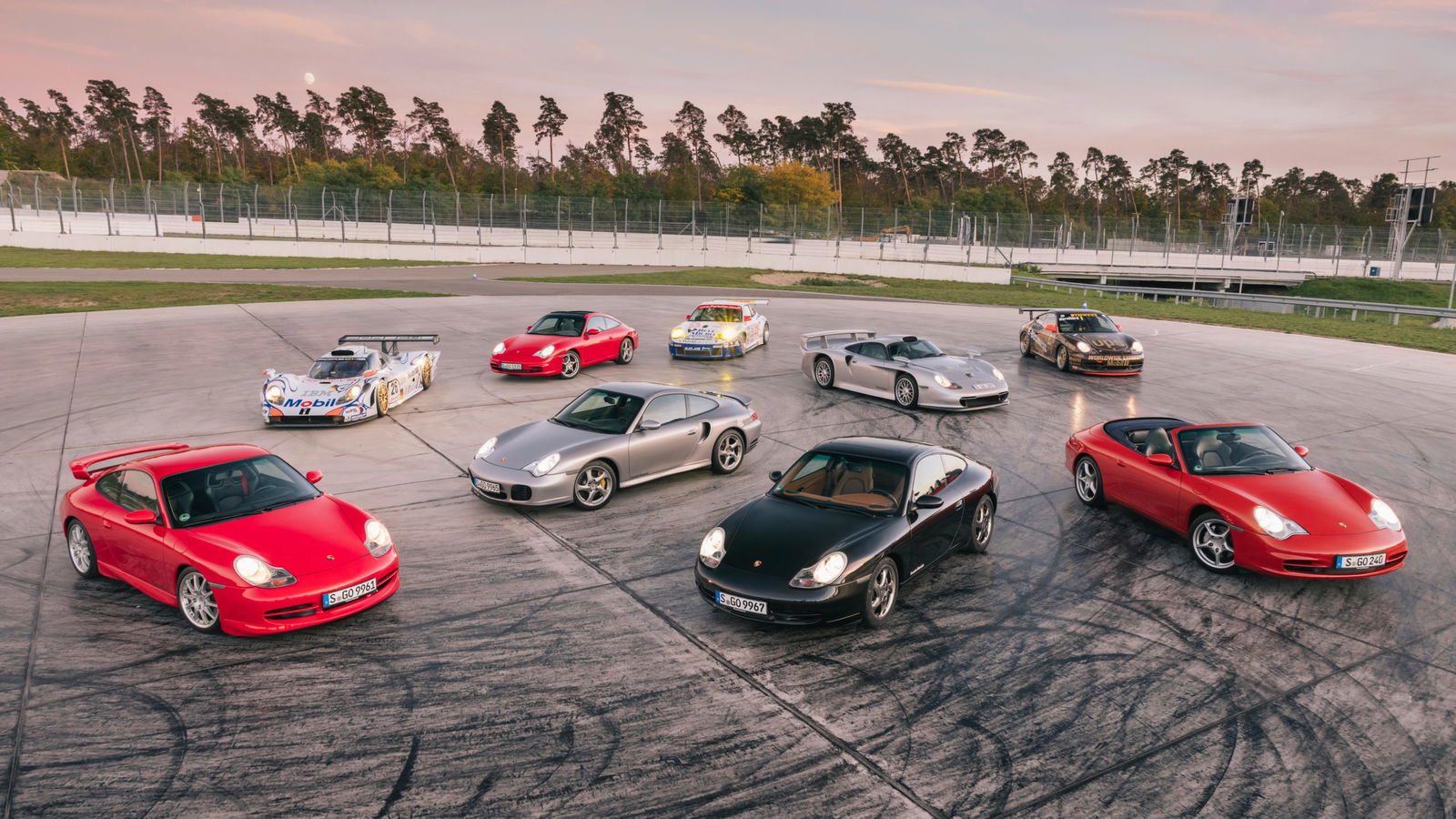
It was the Porsche that broke all the rules, but in doing so helped to save the company and allow it to flourish.
The 996-generation of Porsche’s iconic 911 turns 25 in 2022 and while celebrated today, at the time it was a controversial arrival for several reasons. It was bigger than the 993-generation it replaced, had unusual new headlights and, most controversially of all, it used a new water-cooled engine; replacing the air-cooled flat-six that had become synonymous with the car.
What’s more this new 911 was designed, from the windscreen forward at least, to be identical with the all-new Boxster that launched in 1996. This was crucial to not only the success of the new 911 but also the brand in general, with Porsche at that time focused primarily on the 911 with the front-engine 968 and 928 attracting only modest interest.
Same, but different

Which is why the company ditched the 968 and 928 and came up with a new strategy to share parts across both the Boxster and 911 to save development and production costs, as August Achleitner explains. He was Head of ‘Technical Product Planning, Vehicle Concepts and Package including Special Projects’ between 1989 and 2000 at the German brand, and he was charged with making this new plan work.
“Porsche needed a car in a lower price segment, to help generate a higher volume of sales. So this led to the idea of the Boxster and the 996 sharing parts,” Achleitner says today, looking back on the project.
Finding the right engine was a challenge and he reveals now that Porsche even briefly considered a V8-powered 911.
“We experimented with the engine because the air-cooled two-valve-per-cylinder designs were at the end of the road technologically in terms of emissions and power. And air-cooled four-valve boxers didn’t work due to various hotspots that we couldn’t get a handle on. In 1989, a compact V8 was even fitted in the rear on a trial basis, but that idea was also discarded. So that brought us to water-cooled, four-valve boxer engines.”
Porsche purists

While it remained a ‘boxer’ layout with six-cylinders and various capacities, as had been the case with the previous generations of 911, the switch to a water-cooled design led to uproar from Porsche purists.
As did the new look, with the round headlights that had helped define the shape of the 911 replaced by new ‘egg-shaped’ units that also upset traditionalists. Once again, these were designed with efficiency in mind, with the new design incorporating both the headlights and indicators making them cheaper to build and install.
Harm Lagaaij was Porsche’s chief designer at the time and was charged with creating both the 911 and the Boxster. But also making sure they looked unique whilst also sharing as many parts as possible – not an easy assignment.
“The task was a major challenge,” Lagaaij says. “But we mastered it by first designing a number of different Boxster-996 matching parts.”
But to achieve this the design team grew to 80 people and they were forced to work on 1:1 scale models in order to achieve their goal in time.
Lagaaij defends the design of the lights, even though they were derided by media and customers and were replaced for the 997-generation and haven’t returned since.
“The design was totally unique: five functions in a single module that was not expensive and could be installed in minutes on the assembly line,” Lagaaij says.
Success means growth

Regardless of how they looked, the Boxster and 911 proved popular with customers and helped secure Porsche’s future. According to Achleitner the company’s internal goal was to sell 30,000 units of both vehicles in order to get a suitable return on its investment in the shared development.
The Boxster went on sale in ‘96 and immediately proved a hit and when the 996-generation 911 arrived in ‘97 it ended up selling more than 50,000 vehicles per year across its lifecycle.
From ‘97 the range expanded to include the Carrera, Carrera S, GT3 and Turbo S models, as well as convertible variants.
Motorsport legacy

The 996 also spawned several important racing models for the brand, most notably the 911 GT1 which took the brand back to outright contention at Le Mans for the first time since the Group C era ended.
The GT1 rules were loose enough for Porsche to effectively create a prototype racing car despite the regulations trying to attract road-going supercars – such as the McLaren F1 and Ferrari F40. Porsche pushed the limits, shifting the engine to the middle and using a 3.2-litre flat-six based on the race-proven unit from the 962 Group C winner. Then to comply with the rules Porsche built 25 road-legal examples of the car, known as the 911 GT1 Straßenversion.
Ironically, while the 911 GT1 was quick at Le Mans, it was beaten by the Tom Walkinshaw Racing-built, Joest Racing-run Porsche WSC-95, a short-lived factory-backed program that was ultimately cancelled before the company raced it.
By 1998 Porsche introduced the new 911 GT1-98 and claimed its 16th overall win at the 24-hours of Le Mans.
The 996-generation also formed the basis for the company’s successful one-make Supercup and Carrera Cup racing cars. The 911 GT3 Cup was designed and built in-house and competed in various categories around the world, including the Australian Nations Cup GT series and the inaugural Australian Carrera Cup series in 2003.
How the 996 changed Porsche

The success of the 996 was meaningful but Porsche knew it needed more to grow and thrive, leading to the creation of the Cayenne SUV in 2002. While even more controversial than the new 911 the Cayenne became a huge sales success for the brand and has allowed the 911 and 718 sports cars to thrive.
The foundations laid by the 996 really helped springboard Porsche into this current era of prosperity.














Discussion about this post